The NFL offseason features a lot of moving parts: 32 rosters of 53 bodies, a seven-round draft, and a massive free-agent pool make for plenty of change before a given season kicks off. In an effort to get you ready for the 2016 campaign, The Ringer will spend each Friday through September 2 doing its part to remind you how the dust settled — who landed where, what will be expected of them, and what’s different than it was last year. Today, we’re looking at players who, following either team or coaching changes, landed in new schemes that could maximize their impact this fall.
Fletcher Cox, DT, Eagles
When the Eagles gave Cox his massive six-year, $102.6 million deal — replete with $63.3 million in guarantees — in June, plenty of people had the same reaction: Who?
Cox has been a favorite among Eagles fans and defensive line hipsters (read: me) for a while now, but before last season, he was a guy who’d never been voted to the Pro Bowl and had only 12.5 sacks in his three-year career. His sack total spiked to 9.5 last fall, but on a 7–9 team, Cox remained relatively unknown to anyone living west of Wilmington or north of Trenton. I have a good feeling that’s going to change soon.
Looking at the three richest defensive tackles in football — Cox, Ndamukong Suh, and Marcell Dareus — there’s one thing they have in common: Each garnered at least some of his value from Jim Schwartz. Suh’s first four seasons in Detroit came during Schwartz’s tenure as head coach; Dareus got his $60 million guaranteed deal on the heels of a 10-sack campaign for a Schwartz-coordinated Buffalo defense in 2014; and part of Philadelphia’s logic behind Cox’s colossal contract was the terror he could become in Schwartz’s scheme.
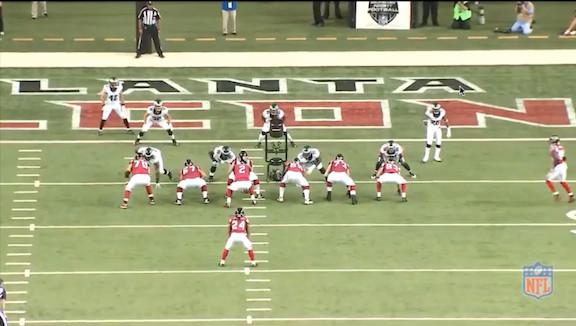
Former Philly defensive coordinator Bill Davis used Cox in a lot of different ways, but on a majority of snaps, this is where Cox would line up: as a 5-technique defensive end, head-up on the left tackle. In traditional 3–4 defenses, ends are taught to play two gaps. Rather than slash straight ahead, their job is to control blockers, which both clogs running lanes and provides covering fire to the linebackers behind them.
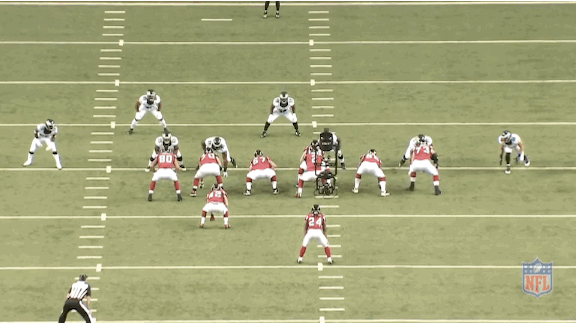
This approach is inherently passive. The emphasis is less on penetration and more on control. If a defender does get into the backfield, it’s only after he dominates with physicality, not with quickness. And for someone with Cox’s talent, that’s going to happen often enough to make some noise (like on the play above).
On Schwartz’s defenses, the noise isn’t occasional. This shit is turned to 11 on every play. In Buffalo, Schwartz trotted out the Four Horsemen of the Sackpocalypse in Dareus, Mario Williams, Kyle Williams, and Jerry Hughes. With those guys rushing the passer, the Bills were able to deploy a standard four-man rush and still become the stuff of quarterback nightmares. After being hired by the Eagles in January, Schwartz will look to make this defense equally frightening.
The vastly underrated Vinny Curry — who just signed a five-year, $47 million deal in February — could push Cox to nose tackle in certain packages. But for the most part, Cox should fill the 3-technique role that Kyle Williams played for Schwartz in Buffalo.
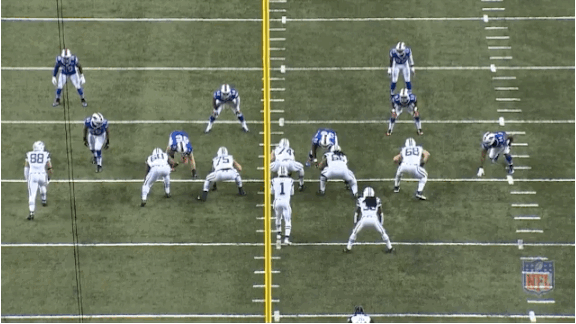
Almost as important as the change in alignment that comes with Schwartz’s scheme is the change in mind-set. Take a look at Williams on the play above. There’s nothing passive about that. He has one job, and it’s to ruin the quarterback’s day. For the first time, Cox is stepping into a defense that will always be on the offensive. Considering the damage he did last season — fifth among defenders with 34 hurries — that should keep Tony Romo up at night.
There are limits here. A good chunk of Cox’s 9.5 sacks last year came while mopping up plays; he’s not suddenly going to get 15 now. And it’s not as if the Eagles used him solely as a block-eating impediment in 2015, either. Davis occasionally put Cox in positions to annihilate guards; it would have been downright irresponsible not to.
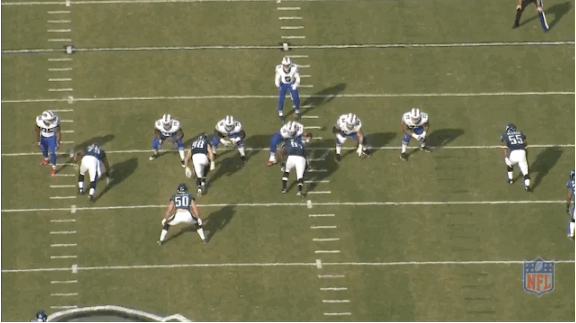
For anyone worried that the excitement over Cox in a 4–3 defense is premature extrapolation, though, take a look above at one of those plays when he was let loose. That is a man who deserves to be unleashed, and this year, he will be.
Coby Fleener, TE, Saints
Fleener had a hell of an offseason. Not only did the former second-round pick get $18 million guaranteed from the Saints — he also woke up in tight end heaven.
Before last year, it was impossible to know whether the tight-end-centric feel of the Saints offense was the product of New Orleans’s approach or Jimmy Graham. Well, now we have an answer. Ben Watson — 35-year-old Ben Watson, who carried a $1.9 million cap hit in 2015 — got 110 targets last fall for an offense that finished seventh in the league in passing DVOA. That number was good for seventh among tight ends and second on the Saints; Watson’s 825 yards and six touchdowns were also enough to land him a nice late-career payday with the Ravens in March.
Saints head coach Sean Payton’s track record should mean an uptick in targets for Fleener, who finished with just 84 on the Colts last season. But the tight end’s upside this fall goes beyond that. In 2015, Fleener was a secondary option, by virtue of both volume and play design. Two years ago, his average depth of target was 11.7 yards (second among tight ends), according to Pro Football Focus; after the Colts fired offensive coordinator Pep Hamilton last November, it dropped to 7.7 (27th at the position).
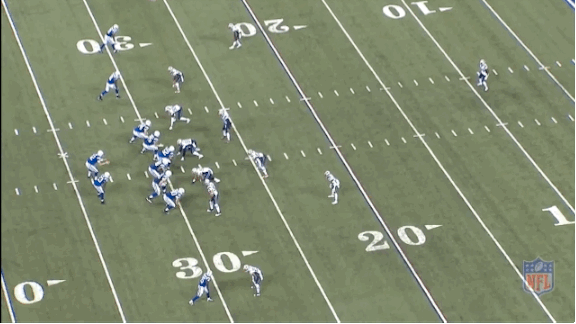
Losing Andrew Luck to injury was part of the problem. Luck’s replacement, Matt Hasselbeck, was more content to take throws available to him rather than push the ball down the field. But even when Luck was healthy, it was clear that Fleener was being marginalized last season. Most of his work came on plays like the one above: working the underneath areas of a defense after Indy’s speedy receivers had sucked the coverage downfield. The result was an average of 9.1 yards per catch — a 6-yard drop-off from the season before. Imagine how boring a life of running 3 yards and turning around must be. I’d rather rewatch the Vinyl pilot then go through Fleener’s 2015 tape one more time.
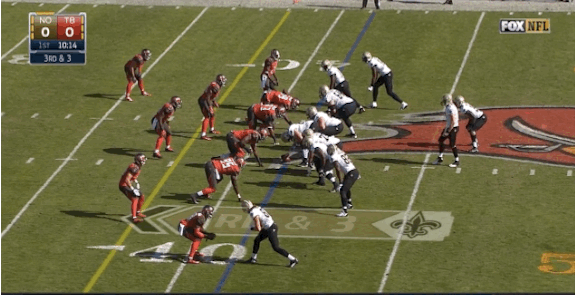
Even on plays designed for Fleener last season, his goal was to take advantage of the Colts’ receivers soaking up the attention. In New Orleans, things don’t work that way. The tight end is often the focal point, whether lining up wide and running slants against man coverage, roasting linebackers up the seam in the red zone, or grabbing chunks of yardage on pick plays like the one above. It remains to be seen if Fleener is worthy of that type of treatment, but one thing’s for sure: He’ll get his chances with the Saints.
Lamar Miller, RB, Texans
My enthusiasm for Miller has more to do with the projected change in his workload than anything else. He showed an ability to do it all in Miami, and he’ll have a chance to do it all, a lot more often, during his first year with the Texans.
Over the past two seasons, it didn’t seem to matter what the rest of the Dolphins backfield was doing: Miller was going to get his. In 2014, he averaged 5.1 yards per carry. Miami’s next two backs — Daniel Thomas and Damien Williams — averaged a combined 3.6 yards on 80 carries. Last fall, while Williams, rookie Jay Ajayi, and former Patriots bowling ball Jonas Gray failed to crack the 4-yards-per-carry mark, Miller finished the season averaging 4.5 yards.
Still, it was never enough to earn Miller more than 216 carries in a season. He averaged 12.1 totes per game for a 2015 Dolphins team that, again, wasn’t exactly stocked with quality running back options.
He won’t have the same problem in Houston. Only Adrian Peterson (20.5 carries per game) averaged more rushes the past two seasons than Arian Foster, and that doesn’t even take into account all the work Foster did in the passing game. In all, Foster averaged 21.3 touches per game last year — a full 6.3 more than Miller got in Miami. The Texans didn’t give Miller a contract with $14 million guaranteed — sixth among running backs — to watch him carry the ball 13 fewer times than Ronnie Hillman, like he did a year ago.
There’s an argument to be made that Miller’s effectiveness in the Dolphins’ offense was possible only because of his reduced workload, but I’m not buying that. He’s a sudden, explosive runner, one who did most of his damage over the past few years without anything resembling a stable offensive line. To go with all their other new offensive toys, like Miller and quarterback Brock Osweiler, the Texans also drafted center Nick Martin in the second round and signed excellent guard Jeff Allen away from Kansas City. All we have right now is what’s on paper, but there’s a version of this unit that can roast the AFC South this season. Miller would be a big reason why.
Reshad Jones, S, Dolphins
There’s no way to know for certain whether new Dolphins defensive coordinator Vance Joseph will bring the principles he learned in Cincinnati — where he served as defensive backs coach the past two seasons — with him to Miami. If he does, though, it could mean a whole lot of fun for Jones.
For the Bengals, the designations “free safety” and “strong safety” haven’t meant much in recent years. Both Reggie Nelson (now with the Raiders) and the recently re-signed George Iloka split duties as the single-high safety when Cincinnati went with that look in 2015, and often it was Nelson — nominally the free safety — who would lurk near the line of scrimmage.
My hope is that this year Jones gets the same treatment for the Dolphins. At 6-foot-1 and 215 pounds, he’s a sturdy back-end defender who can cause a lot of damage when charging downhill. That’s what made it frustrating last fall to watch him stay about 15 yards deep into the defensive backfield, even if he did finish with five interceptions.
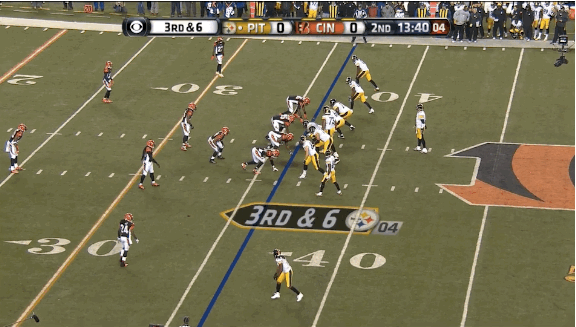
Both Bengals safeties spent time hovering around the ball a year ago, and both were given ample opportunities to wreak havoc in that portion of the field. Cincy finished 14th in defensive back blitz rate last year, with almost all of that extra pressure coming from its safeties. Miami finished 26th in the same metric. Jones deserves a defense that uses every bit of his athleticism, and if Joseph brings some of Mike Zimmer’s scheme with him, the seventh-year safety just might get it.
Travis Benjamin, WR, Chargers
Every once in a while, there’s a mid-tier free-agent signing I totally forget about. The move gets lost in the offseason frenzy, and come June or July, I look at a team’s depth chart and think, “Oh yeah! That happened!” Benjamin landing in San Diego fell into that category this year, and being reminded of gave me a chance to get excited all over again.
The most memorable part of Benjamin’s 2015 season was easily the Browns’ Week 2 game against Tennessee, when he scored three touchdowns (two on receptions and one on a punt return), all of which went at least 50 yards, in a 28–14 win. Benjamin showed last fall — mostly with Johnny Manziel starting at quarterback, no less — why he’s among the scariest quick-strike players in football. He finished the year with 966 receiving yards. Nearly a third — 314 — came on only six catches.
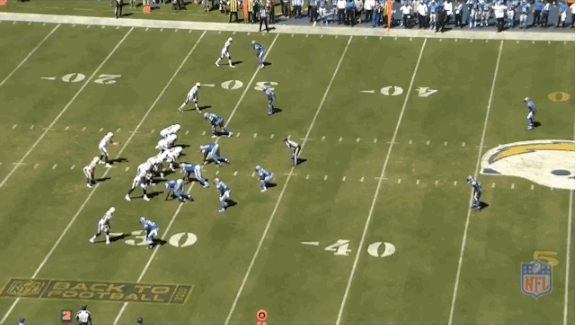
We know he can stretch the field, and that’s an area where the Chargers have a void. The recently retired Malcom Floyd led the league in average depth of target last season, and Benjamin should instantly provide San Diego with a down-the-field option. It’s easy to see how he’ll inhabit Floyd’s role in the play above, but what’s funny is the Chargers’ new deep threat, at 5-foot-10 and 175 pounds, is 7 inches shorter than their old one.
That won’t matter much with the way Benjamin tears down the field, and that, more than anything else, is the element he brings to San Diego. When QB Philip Rivers and that offense are rolling, the Chargers play a get-open-and-I’ll-get-you-the-ball brand of offense I love. Keenan Allen, Antonio Gates, and Danny Woodhead all belong in the Always Open Club, but Benjamin can give the team a jolt it hasn’t had in … I don’t even know how long.
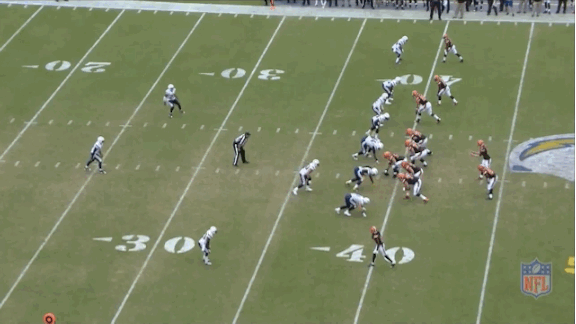
His speed (4.36 in the 40) offers San Diego the opportunity to launch some downfield rockets, but it also makes him an ideal midrange target in a Rivers-led offense. Since cornerbacks have to respect his speed, Benjamin is able to chew up defensive backs on timing-based comebacks and underneath routes — the type of throws on which Rivers thrives. Benjamin’s deep catches from last year were memorable, but take out the six bombs mentioned above and he averaged 10.5 yards a grab. That’s possession-receiver stuff, and I could absolutely see him filling the crossing-route and screen-game holes created when the Chargers lost Stevie Johnson for the season to a meniscus injury.
Benjamin has a chance to be an amalgam of the two major pieces that San Diego will miss this year, and he’ll play with Rivers instead of the latest victim of Cleveland’s quarterback black hole. You can understand why I’m looking forward to this.